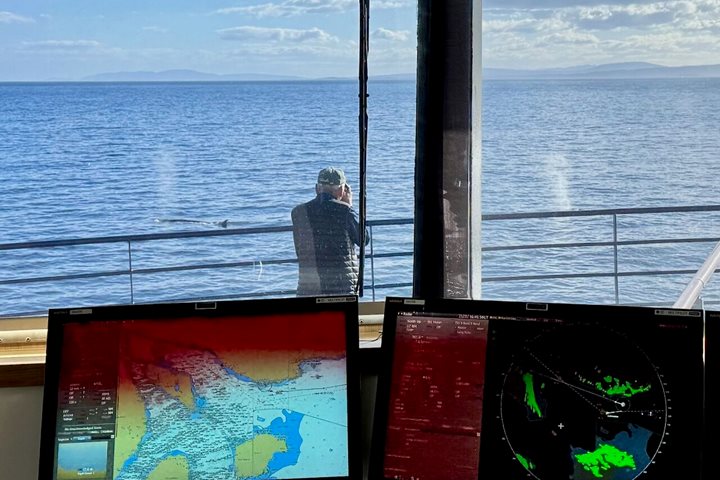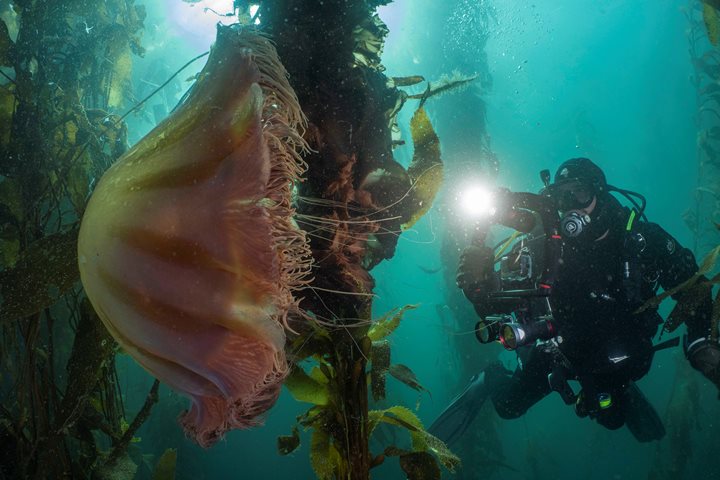Exploration of the Scotia Sea dates back to the 17th century. It began as tentative and often mistaken exploration as ships were blown off course at the mercy of the intense weather systems commonly found here in the Southern Seas. Many ships were blown eastwards while attempting to round Cape Horn, being flung towards our anticipated destinations of the Falkland Islands and South Georgia. Exploration soon developed into purposeful and targeted expeditions throughout the 18th, 19th, and 20th centuries as the immense and profit filled populations of seals and whales were discovered inhabiting this sea and these islands.
Indeed the Scotia Sea is named after the ship Scotia, upon which the Scottish National Antarctic Expedition of 1902 – 1904 was carried out—one of the more successful scientific expeditions in the history of exploration in these remote Southern Seas. For all of us on board, the idea of visiting these distant seas is not so outlandish as it may have been centuries ago. Today we don’t visit these seas to plunder its rich bounty of marine mammals in the hope of making our fortune. Today we visit these seas to appreciate some of Earth’s most remarkable destinations for different reasons.
We have already seen some of the remarkable destinations in the Falkland Islands. We have observed black browed albatross chicks on their nests being fed by their parents. We have had two rare whale sightings—both the southern right whale and the sperm whale. We are merely three days into our voyage and already we are appreciating why this part of the world is so unique and why we have chosen to venture into these far-flung Southern Seas.
Today we are back at sea on board the National Geographic Explorer as we sail further east across the Scotia Sea and onwards into the Southern Ocean. Smooth seas and clear skies accompany us on our voyage, a far cry from the infamous storms encountered by so many of the historic expeditions. We do not know what weather we may encounter as our expedition continues, but a calm clear day is always one to make the most of.
For many of us the calm sea day is the perfect opportunity to acquaint ourselves with our ship a little more. Spending time on the bridge watching for wildlife, drinking a coffee and enjoy a cookie as the Scotia Sea slips by is tranquillity for some. For others the insightful lecture programme on board keeps our curiosity in check. This afternoon was a chance to hear form Michael Melford, our on board National Geographic photographer. Today we had the opportunity to hear about Michael’s travels both in the U.S. and overseas to capture iconic images for National Geographic. To hear some of the more intricate stories behind an image, including anecdotes about local guides; the chance moments that arise with wildlife and timing; the hours spent shooting in the early mornings, late nights or indeed all night is a special and unique opportunity offered to us. Not only have we been able to learn more about his work today, but as this voyage continues we get the unique opportunity to journey with him every day and thus soak up his knowledge, take hints and tips and ask as many questions as we can about his and our own photography.
Continuing our journey towards South Georgia with such a wealth of knowledge on board makes a journey such as this more memorable, and also more insightful. We are here to travel, to explore, and to see a part of the world many people will never get the chance to see. It is remote. It is weather beaten. It is cold. Over and above all of this it is fascinating, exciting and enthralling. We are certainly not early explorers blown off course and at the mercy of harsh winds and high seas, or whalers charged with the expectation of making a fortune. We have chosen a cosy and comfortable platform upon which we can make the most of this unique journey and reap the benefits of the knowledge and expertise on board.







